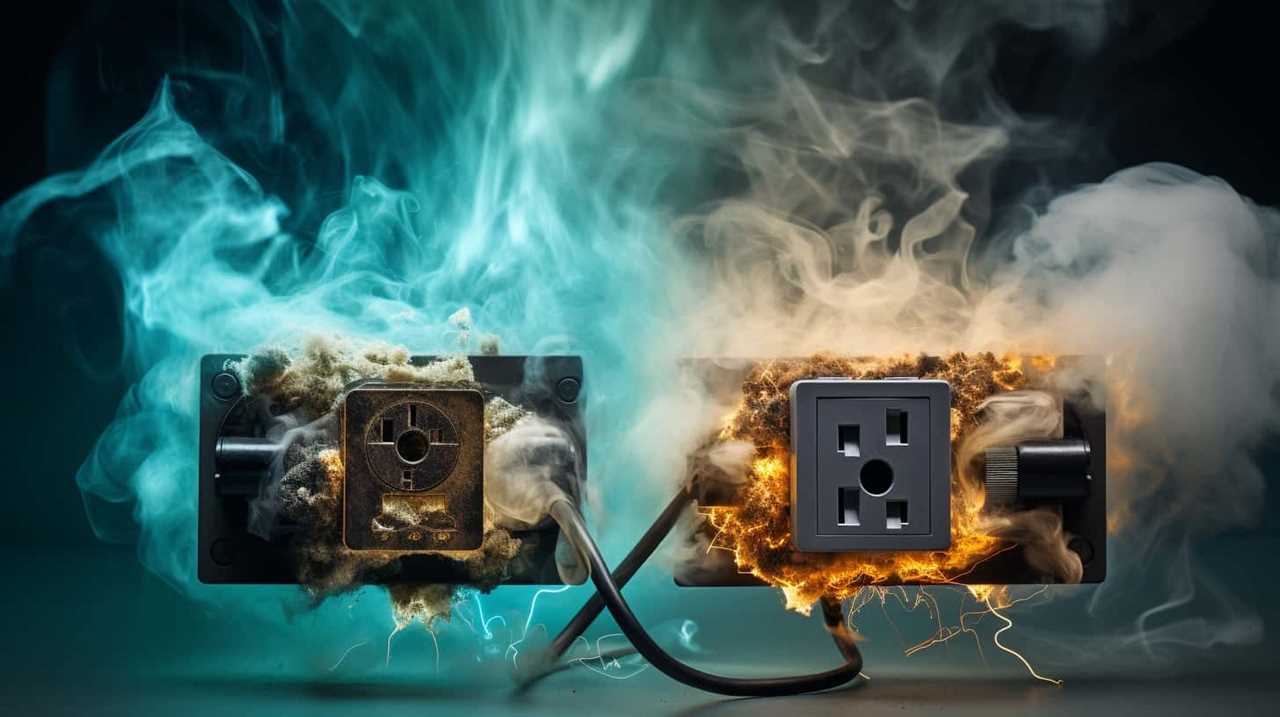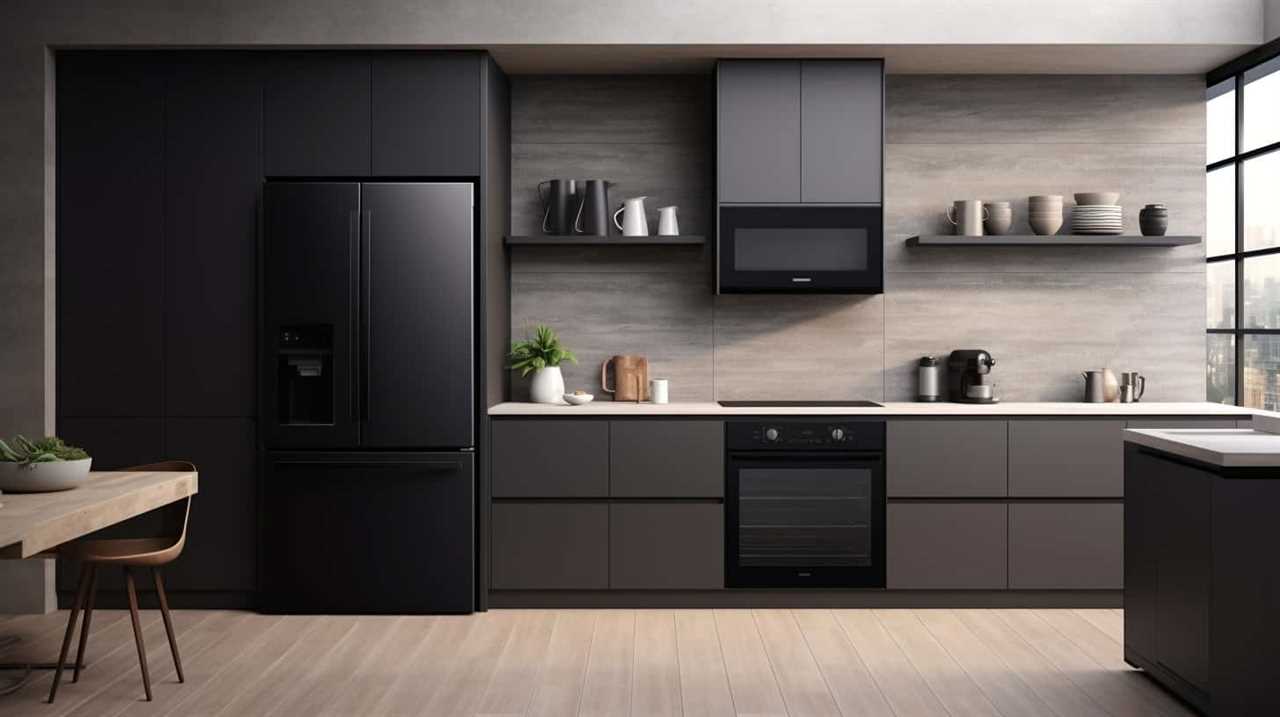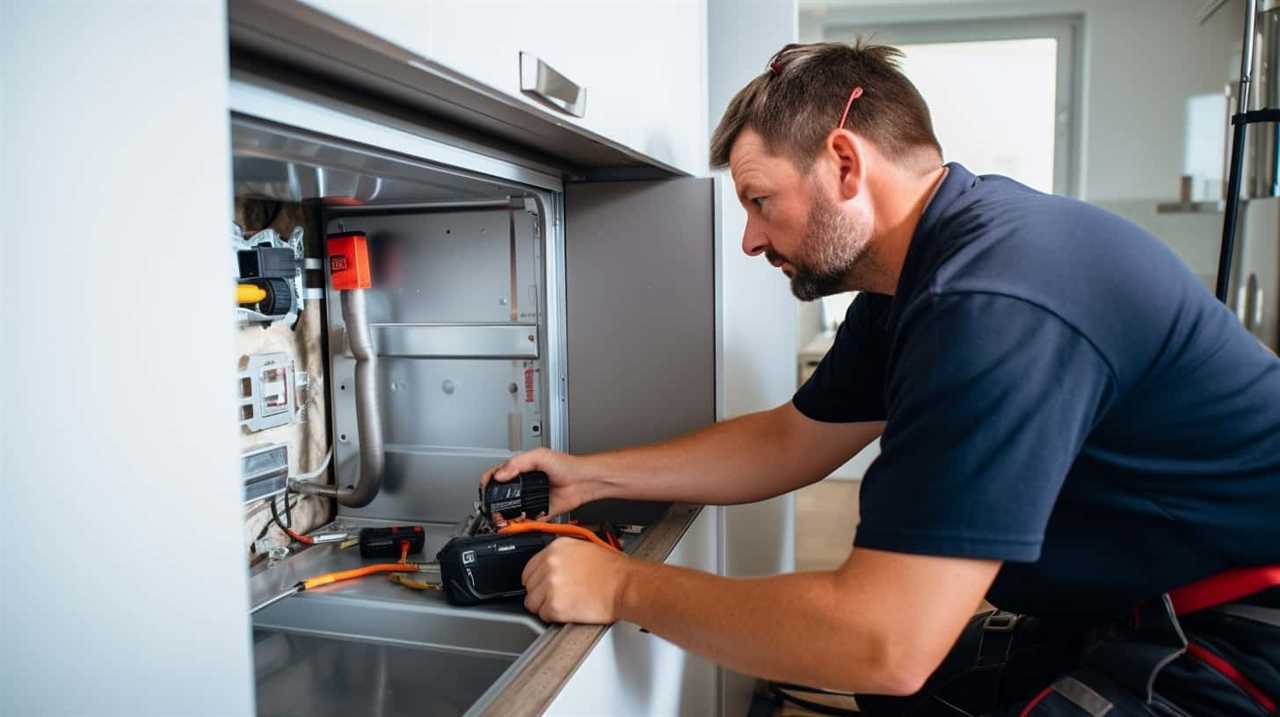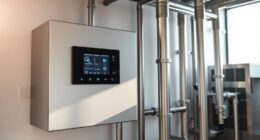In the pursuit of energy efficiency and sustainability, it is essential for people to consider how their household appliances can impact electricity consumption. The question that often comes up is: Do older appliances use more electricity?
This inquiry holds utmost relevance for those seeking mastery in understanding the intricacies of energy usage. By delving into this topic, we can explore the factors that contribute to electricity consumption, the role of technological advancements in enhancing energy efficiency, and the potential energy-saving measures that can be implemented.
Through a comprehensive analysis, individuals can make informed decisions about their appliances, determining when it may be time to upgrade and how to reduce energy consumption. This exploration ultimately aims to equip readers with the knowledge required to minimize their ecological footprint and maximize energy efficiency.
Key Takeaways
- Energy efficiency is the measure of how effectively appliances use energy to perform tasks.
- As appliances age, they can become less efficient and consume more electricity.
- Older appliances have a significant impact on energy bills, with energy consumption and costs increasing as appliances age.
- Upgrading to modern, energy-efficient appliances can result in lower electricity usage and significant savings.
Energy Efficiency: What It Means
Energy efficiency is the measure of how effectively appliances use energy to perform their intended tasks, ensuring optimal electricity consumption. It is an important factor to consider when purchasing and using appliances, as it directly impacts both energy consumption and cost.
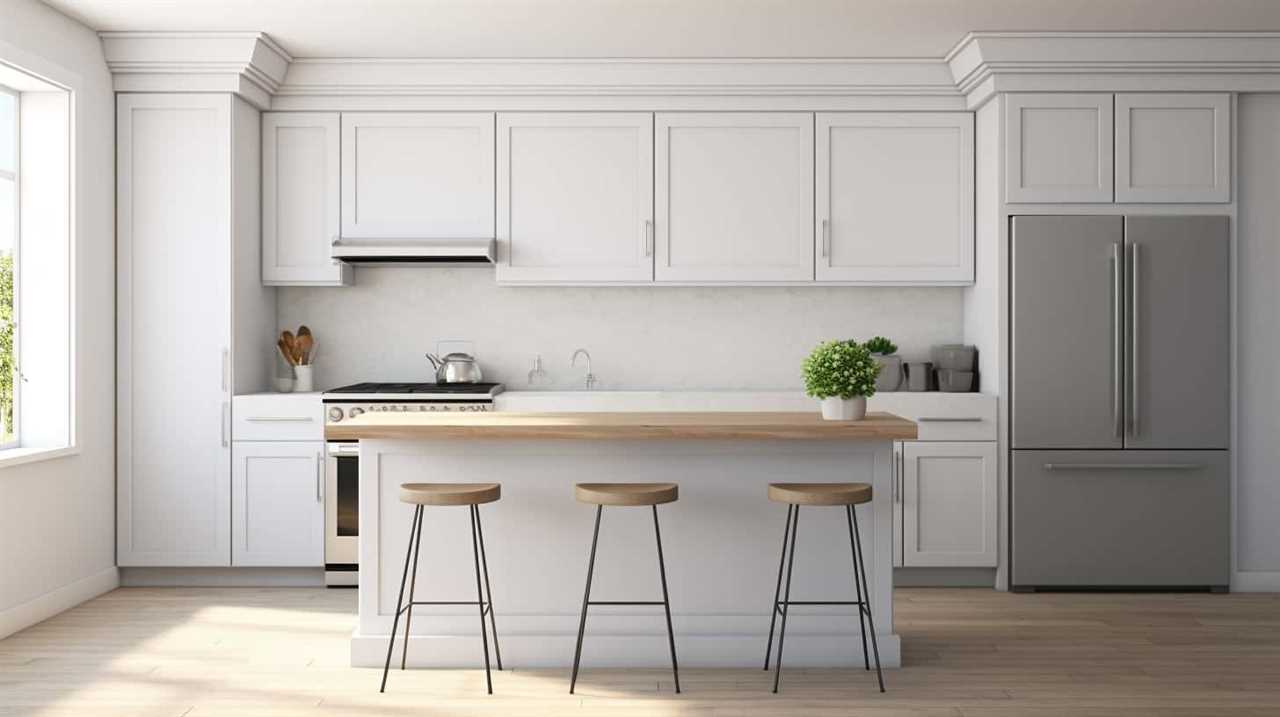
Appliances with higher energy efficiency ratings consume less electricity, resulting in lower utility bills. Additionally, energy-efficient appliances have a longer lifespan compared to their less efficient counterparts. This means that investing in energy-efficient appliances not only saves money in the long run but also reduces the environmental impact by minimizing the need for frequent replacements.
Understanding energy efficiency and its relationship to appliance lifespan is crucial in making informed decisions about which appliances to purchase. By considering both factors, consumers can choose appliances that not only save energy but also last longer, maximizing their overall value.
In the following section, we will delve into understanding appliance energy labels, which provide valuable information about an appliance’s energy efficiency.
Understanding Appliance Energy Labels
Appliance energy labels provide crucial information about the electricity consumption of old appliances. These labels, which are required by regulations in many countries, help consumers make informed choices about their purchases. Here are some key points to understand about appliance energy labels:

- Energy Efficiency Rating: Appliance energy ratings are usually displayed on a scale from A to G, with A being the most energy-efficient and G being the least. Choosing appliances with higher ratings can lead to significant energy savings over time.
- Estimated Annual Energy Consumption: Energy labels also provide an estimate of how much electricity the appliance is expected to consume in a year. This information allows consumers to compare the energy efficiency of different models.
- Energy Saving Tips: Labels often include energy-saving tips specific to the appliance, such as recommended settings or usage guidelines. Following these tips can further reduce energy consumption.
- Energy Cost Estimation: Some labels also provide an estimate of the annual energy cost based on average electricity prices. This can help consumers evaluate the long-term financial impact of their appliance choices.
Understanding appliance energy labels is essential for making energy-efficient choices and reducing electricity consumption. With this knowledge, consumers can now explore how the lifespan of appliances affects their energy consumption.
Lifespan and Energy Consumption
When it comes to the lifespan of appliances, it is important to consider their energy consumption. As appliances age, they can become less efficient, resulting in increased energy usage.
This can have a direct impact on energy bills, as older appliances may consume more electricity than newer, more energy-efficient models. Understanding the relationship between appliance age and efficiency is crucial for making informed decisions about energy consumption and managing costs.
Appliance Age and Efficiency
With regards to appliance age and efficiency, there is a correlation between the lifespan of an appliance and its energy consumption. As appliances age, they tend to become less efficient, resulting in increased energy consumption. This can be attributed to various factors such as wear and tear, outdated technology, and the lack of energy-saving features.

Appliance longevity plays a significant role in energy consumption. Older appliances, especially those that have been in use for a long time, may not be equipped with the latest energy-saving technologies. These technologies, such as improved insulation, energy-efficient motors, and smart power management systems, help reduce energy consumption and lower electricity bills.
Impact on Energy Bills
As appliances age, their impact on energy bills becomes increasingly significant. The lifespan and energy consumption of old appliances directly affect the overall energy consumption and, consequently, the energy bills. Old appliances tend to consume more electricity due to various factors such as wear and tear, outdated technology, and decreased efficiency. These appliances may require more energy to perform their intended functions, leading to higher energy consumption and increased costs.
Additionally, older appliances may lack the advanced energy-saving features found in newer models, further contributing to higher energy usage. Therefore, replacing old appliances with energy-efficient models can have a significant impact on savings and energy conservation. By investing in newer, more energy-efficient appliances, consumers can reduce their energy consumption, lower their energy bills, and contribute to a more sustainable future.
Factors Affecting Electricity Usage
One important factor affecting electricity usage is the age of the appliances. Older appliances tend to consume more electricity compared to newer, more energy-efficient models. Several factors contribute to this difference in energy consumption:
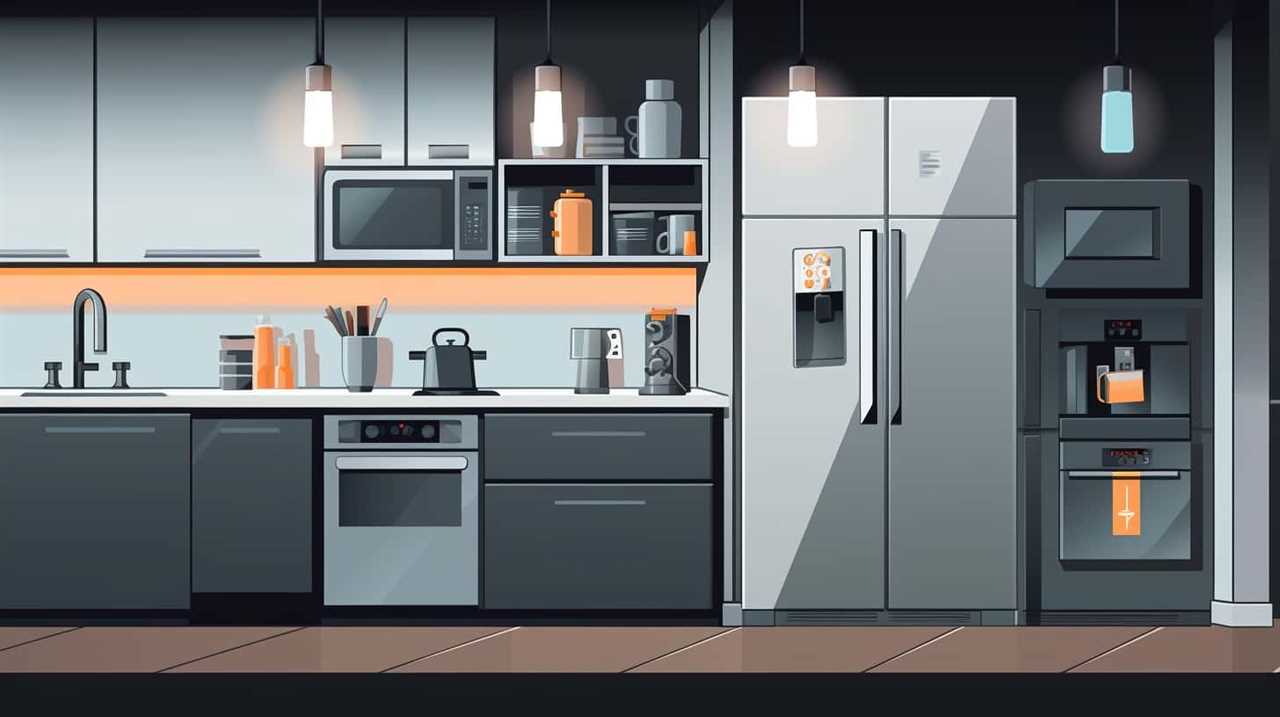
- Efficiency: Newer appliances are designed to be more energy-efficient, using advanced technologies that optimize energy usage.
- Standby power: Older appliances often have a higher standby power consumption, which is the electricity consumed when the appliance is not in use but still plugged in.
- Maintenance: Regular maintenance helps to ensure that appliances are operating at their optimal efficiency, reducing energy consumption.
- Technology advancements: Newer appliances incorporate energy-saving features like automatic power-off and sleep modes, further reducing electricity usage.
How Technology Has Improved Energy Efficiency
Advancements in appliance technology have led to significant improvements in energy efficiency. New appliances are equipped with energy-saving features such as programmable settings, temperature sensors, and power management systems that optimize electricity consumption.
These advancements have resulted in lower energy consumption, reducing the overall electricity usage of appliances and contributing to a more sustainable and environmentally friendly approach to energy consumption.
New Appliance Advancements
How have technological advancements improved the energy efficiency of new appliances?
Integration of smart technology: New appliances are equipped with advanced sensors and control systems that optimize energy usage based on real-time data and user behavior.

Energy-saving innovations: Manufacturers have developed new technologies such as variable speed compressors in refrigerators and heat pump dryers that significantly reduce energy consumption.
Improved insulation and sealing: New appliances are designed with better insulation materials and improved sealing to minimize energy loss and maintain optimal temperature levels.
Energy-efficient components: The use of energy-efficient motors, LED lighting, and low-power standby modes in new appliances helps to reduce overall energy consumption.
These advancements in new technology have led to significant improvements in energy efficiency, allowing consumers to save on their electricity bills while also reducing their environmental impact.

With ongoing research and development, we can expect even more energy-saving innovations in future appliance designs.
Energy-Saving Features
The integration of smart technology and energy-saving innovations has significantly enhanced the energy efficiency of new appliances. These advancements have allowed for the development of energy-saving features that help consumers reduce their electricity consumption and save on energy bills.
Energy-efficient technologies, such as sensors, timers, and programmable settings, enable appliances to operate more efficiently by adjusting power usage based on usage patterns or environmental conditions. For example, smart refrigerators can optimize cooling settings based on the contents and frequency of door openings, while smart thermostats can learn and adapt to the homeowners’ preferences to regulate heating and cooling.
Additionally, appliances now come with energy-saving modes that reduce power consumption during periods of inactivity or low usage. These energy-saving features, coupled with energy-saving tips, empower consumers to make conscious choices and reduce their environmental impact while enjoying the benefits of modern appliances.
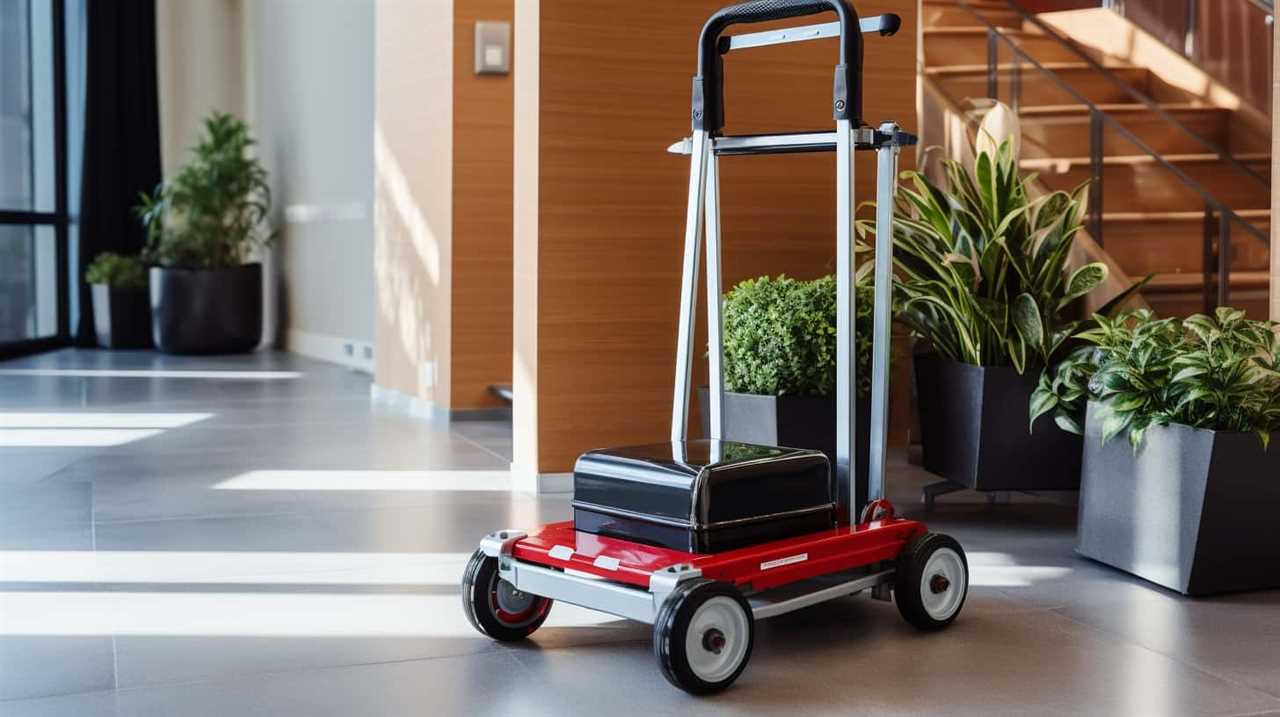
Lower Electricity Consumption
With the integration of smart technology and energy-saving innovations, appliances have significantly improved their energy efficiency, resulting in lower electricity consumption. This advancement in technology has provided consumers with a range of energy-saving tips and eco-friendly options to choose from, allowing them to reduce their energy usage and contribute to a more sustainable future.
Some of the key improvements that have been made in energy efficiency include:
- The development of energy-efficient LED lighting, which consumes less electricity and has a longer lifespan compared to traditional incandescent bulbs.
- The implementation of smart sensors and automated controls in appliances, enabling them to adjust their energy usage based on user behavior and environmental conditions.
- The use of advanced insulation materials in refrigerators and air conditioners, reducing energy loss and improving overall efficiency.
- The introduction of energy-efficient heating and cooling systems that utilize technologies such as heat pumps and geothermal systems.
The Impact of Age on Energy Efficiency
As appliances age, their energy efficiency tends to decrease over time. This decrease in energy efficiency can have a significant impact on electricity bills. Older appliances often require more energy to perform the same tasks as their newer counterparts. Over time, components within the appliance can wear out or become less efficient, leading to increased energy consumption. This increased energy consumption translates into higher electricity bills for the user.
It is important for consumers to be aware of the impact of age on energy efficiency when considering whether to replace their old appliances. By upgrading to newer, more energy-efficient models, consumers can not only save money on their electricity bills but also contribute to a more sustainable and environmentally friendly household.
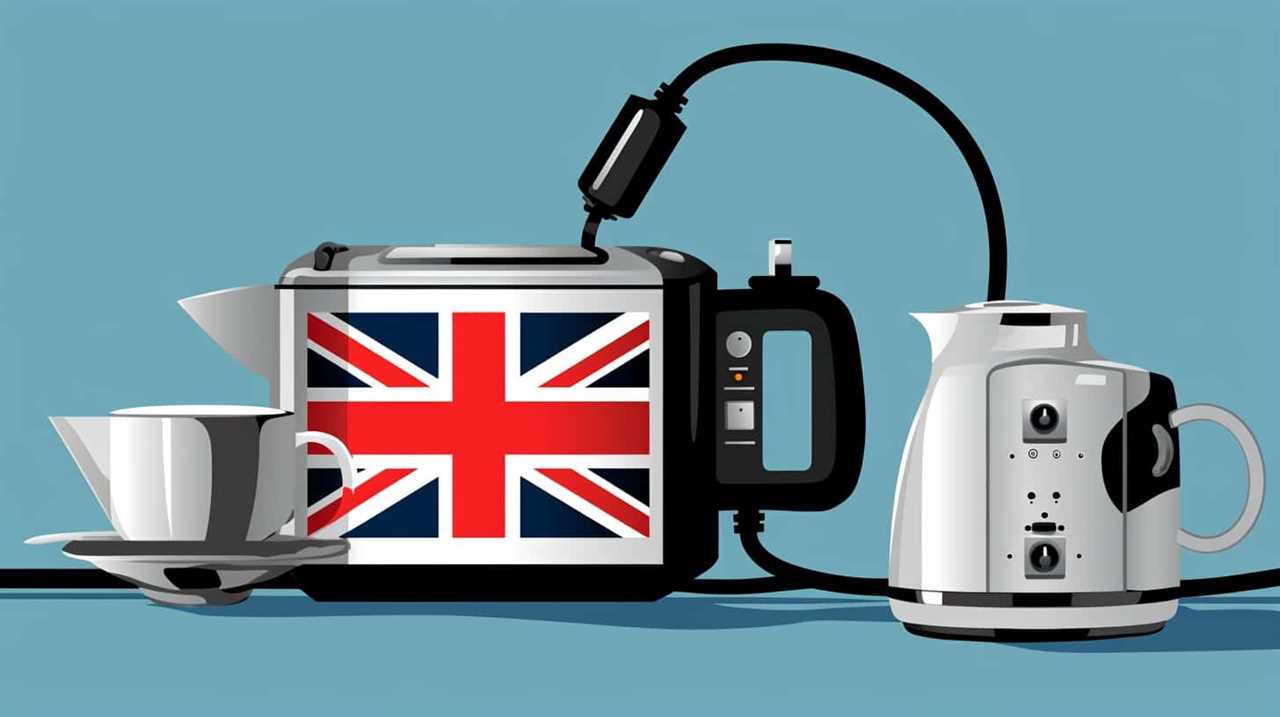
In the next section, we will compare the energy consumption of old appliances versus new appliances to further illustrate the benefits of upgrading.
Comparing Energy Consumption: Old Vs. New Appliances
When comparing the energy consumption of old appliances to new appliances, it becomes evident that there is a significant difference in efficiency. This is due to the advancements in energy-saving technologies and energy-efficient design that have been incorporated into modern appliances.
Here are four key differences between the energy consumption of old and new appliances:
- Energy-saving modes: New appliances often come with energy-saving modes that allow them to operate at lower power levels when not in use, reducing overall energy consumption.
- Improved insulation: New appliances are designed with better insulation, minimizing heat loss and reducing the amount of energy needed to maintain desired temperatures.
- Smart controls: Many new appliances are equipped with smart controls that optimize energy usage based on user preferences and real-time conditions.
- Energy-efficient components: New appliances are built with energy-efficient components such as LED lighting and inverter motors, which consume less electricity compared to their older counterparts.
Common Energy-Hogging Culprits
When it comes to common energy-hogging culprits, aging appliances are often at the top of the list.
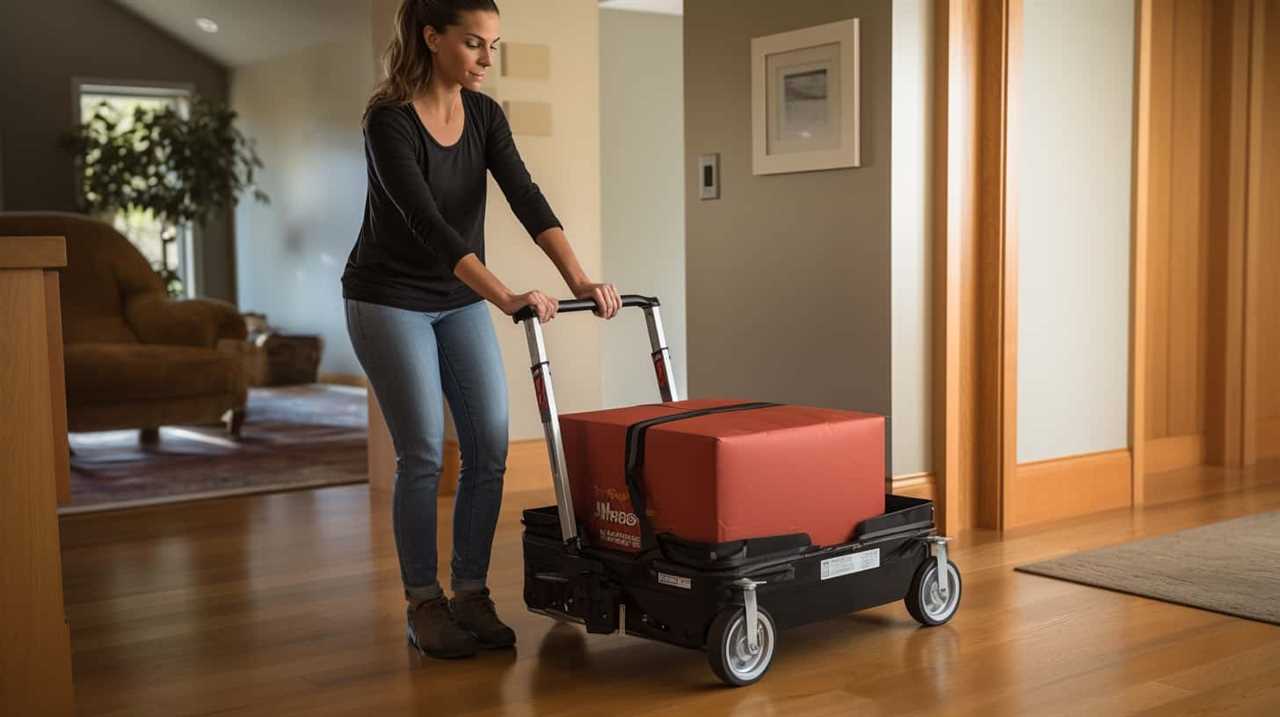
Old appliances tend to consume more electricity due to outdated technology and inefficiencies.
Aging Appliance Energy Consumption
Old appliances, particularly those that have been in use for several years, are known to consume a higher amount of electricity compared to their newer counterparts. As these appliances age, their efficiency decreases, resulting in increased energy consumption.
To minimize the energy consumption of aging appliances, it is essential to prioritize regular maintenance. This includes cleaning filters, coils, and vents, as well as inspecting and replacing worn-out parts.
Additionally, implementing energy-saving hacks can significantly reduce electricity usage. These hacks include adjusting the temperature settings to optimal levels, using power-saving modes, utilizing timers or programmable features, and unplugging appliances when not in use.
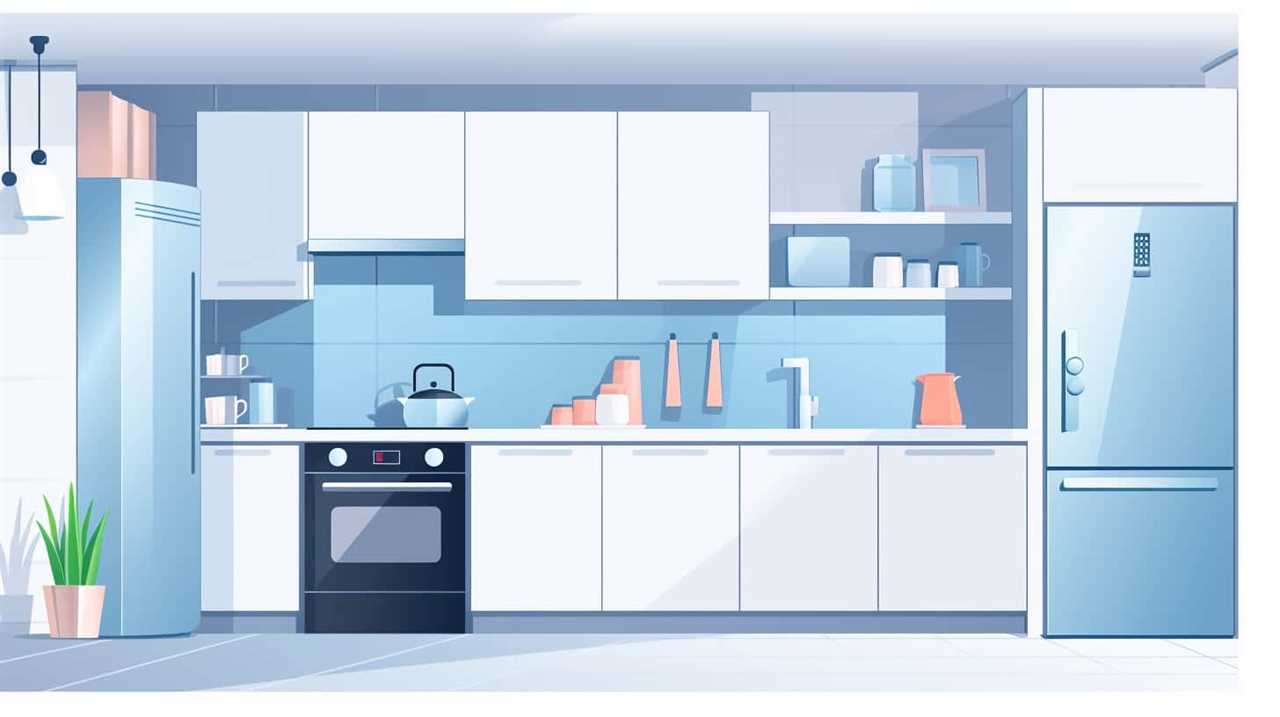
Efficient Vs Outdated Models
Efficient and outdated models of appliances vary significantly in their energy consumption. When it comes to energy efficiency, newer models tend to outperform their older counterparts.
Energy-saving technologies have made significant advancements, resulting in appliances that consume less electricity while providing the same or even better performance. Outdated models, on the other hand, often lack these energy-saving features and can be major energy-hogging culprits.
Upgrading to energy-efficient appliances not only reduces electricity consumption but also helps to minimize the environmental impact associated with energy production. When considering purchasing new appliances, it is important to look for the Energy Star label, which indicates that the product meets strict energy efficiency guidelines.
Cost Savings With Upgrades
Upgrading outdated appliances can lead to significant cost savings by reducing energy consumption. By investing in energy efficient options, consumers can enjoy the following benefits:

- Reduced electricity bills: Upgrading to energy efficient appliances can result in lower energy consumption, ultimately leading to reduced monthly electricity bills.
- Environmental impact: Energy efficient appliances consume less electricity, reducing the overall carbon footprint and contributing to a greener environment.
- Enhanced performance: Upgraded appliances often come with advanced features and technology, providing improved performance and functionality compared to outdated models.
- Rebates and incentives: Many utility companies and government agencies offer rebates and incentives to encourage the adoption of energy efficient appliances, further reducing the overall cost of upgrades.
Tips for Reducing Energy Consumption of Old Appliances
One effective way to decrease the energy consumption of older appliances is by implementing simple maintenance practices. Regular maintenance can help optimize the performance of old appliances, ensuring they operate efficiently and consume less electricity. Here are some tips for maintenance and energy-saving hacks:
- Clean or replace air filters: Dirty filters restrict airflow, causing appliances like air conditioners and refrigerators to work harder and consume more energy. Regularly clean or replace filters to improve efficiency.
- Check seals and gaskets: Worn-out seals and gaskets on refrigerators, freezers, and ovens can let cold air escape, leading to increased energy usage. Inspect and replace faulty seals to maintain proper insulation.
- Defrost regularly: Frost buildup reduces the efficiency of refrigerators and freezers. Defrost them regularly to improve energy efficiency.
- Adjust temperature settings: Lowering the temperature of water heaters, refrigerators, and freezers can help reduce energy consumption without compromising functionality.
When Is It Time to Upgrade
Typically, determining when to upgrade your old appliances depends on how frequently they require repairs or maintenance. Here are some signs of inefficiency and upgrade timing to consider:
- Age: Appliances that are more than 10 years old may not be as energy-efficient as newer models. Upgrading to newer, more energy-efficient appliances can help reduce electricity consumption.
- Frequent breakdowns: If your old appliances require frequent repairs, it may be more cost-effective to invest in a new, reliable appliance instead of spending money on continuous repairs.
- Rising energy bills: If you notice a significant increase in your energy bills, it could be a sign that your old appliances are consuming more electricity than necessary. Upgrading to energy-efficient models can help save on energy costs.
- Outdated technology: Old appliances may lack the latest features and advancements, resulting in inefficiency. Upgrading to newer models can provide improved functionality and energy-saving options.
Conclusion: Making Informed Decisions
Are you ready to make informed decisions about upgrading your old appliances? After understanding the impact of old appliances on energy consumption, it is crucial to consider making smart choices and adopting energy-efficient practices. Upgrading to energy-efficient appliances not only reduces electricity consumption but also saves money in the long run. To further illustrate the benefits, let’s compare the energy consumption of old and new appliances in the table below:
| Appliance | Old Model (kWh/year) | Energy-Efficient Model (kWh/year) |
|---|---|---|
| Refrigerator | 800 | 400 |
| Washing Machine | 600 | 300 |
| Air Conditioner | 1500 | 1000 |
As shown, energy-efficient models consume significantly less electricity, leading to lower utility bills and a reduced environmental impact. By making informed decisions and investing in energy-efficient appliances, individuals can contribute to a more sustainable future.

Frequently Asked Questions
How Do Appliance Energy Labels Work and What Do the Different Ratings Mean?
Appliance energy labels play a crucial role in informing consumers about the energy efficiency of appliances and influencing their purchasing decisions. These labels provide ratings that indicate the energy consumption and efficiency of the appliance, helping consumers make informed choices. Government regulations often mandate these labels to promote the use of energy-efficient appliances and reduce electricity consumption.
What Are Some Common Factors That Can Affect the Electricity Usage of Appliances?
Energy saving practices and regular maintenance are crucial factors that can affect the electricity usage of appliances. By implementing efficient habits and ensuring proper upkeep, individuals can optimize energy consumption and reduce electricity costs.
How Has Technology Improved the Energy Efficiency of Appliances Over the Years?
Advancements in smart home technology and the implementation of government regulations have greatly improved the energy efficiency of appliances over the years. These developments have led to reduced electricity consumption and increased cost savings for consumers.
Are There Any Specific Old Appliances That Are Known to Consume More Electricity Than Others?
Old appliances, particularly those that are older and not designed with energy efficiency in mind, tend to consume more electricity compared to newer, more energy efficient alternatives that have been developed over the years.
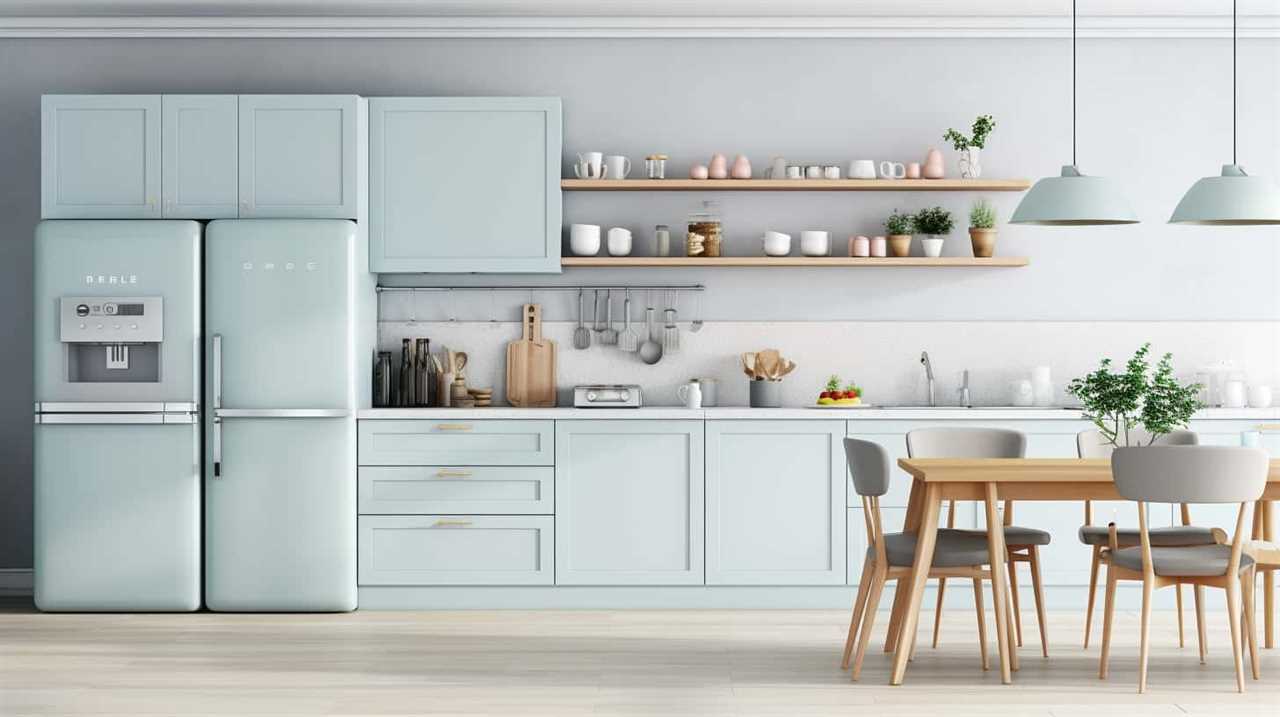
What Are Some Tips for Reducing the Energy Consumption of Old Appliances?
When considering reducing energy consumption of old appliances, it is important to weigh the cost-effectiveness of upgrading versus repairing. Additionally, identifying energy-efficient appliances can help in reducing overall electricity consumption.
Conclusion
In conclusion, understanding the energy efficiency of old appliances is crucial in making informed decisions about their usage.
Factors such as lifespan, energy consumption, and technological advancements play significant roles in determining electricity usage.
By reducing energy consumption through various tips and considering when it is time to upgrade, individuals can make a positive impact on both their energy bills and the environment.
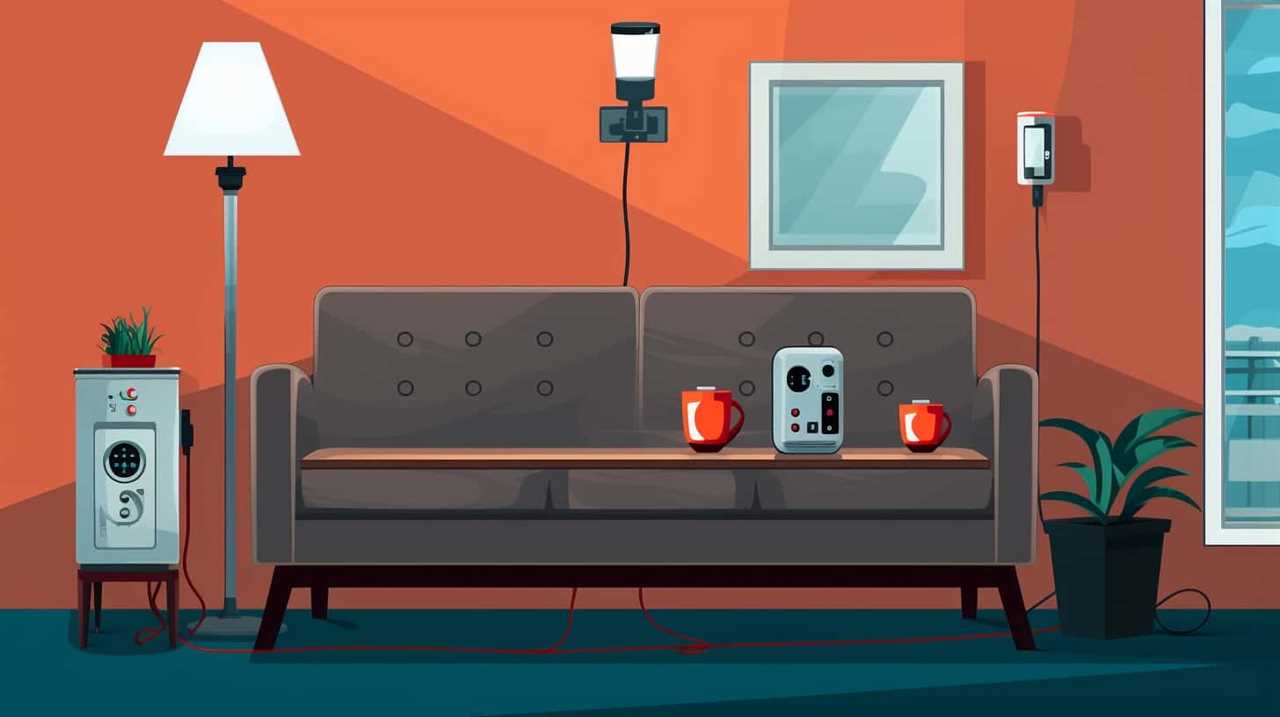
It’s time to separate the energy hogs from the energy savers and choose wisely to lighten the load on our wallets and the planet.
